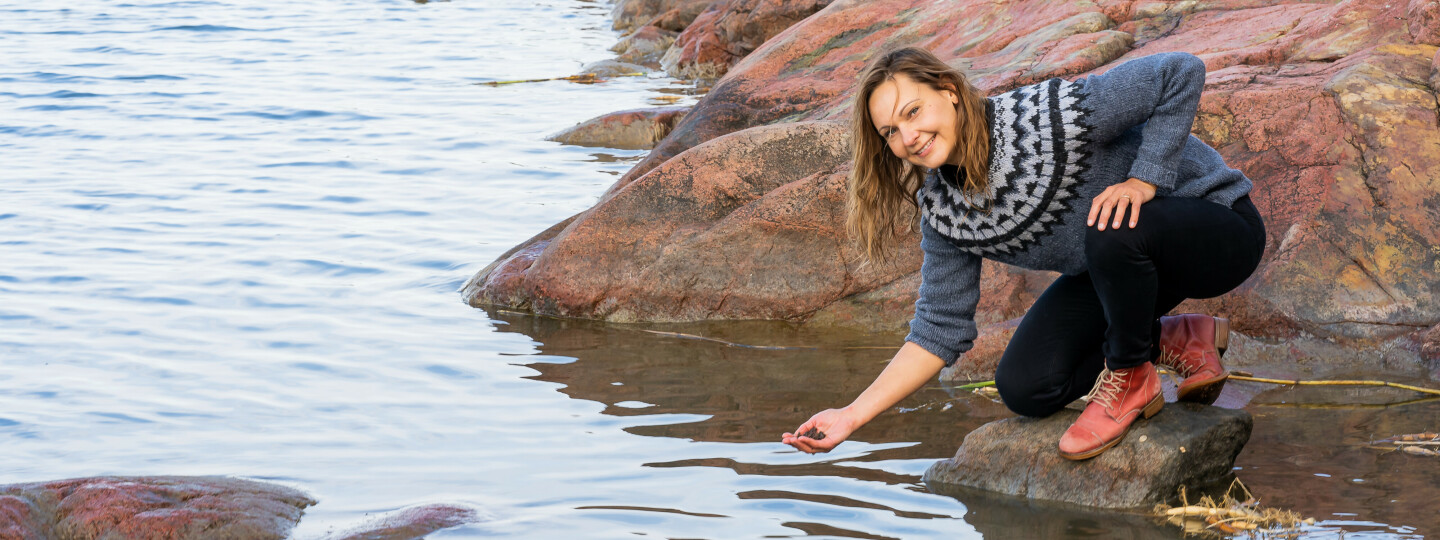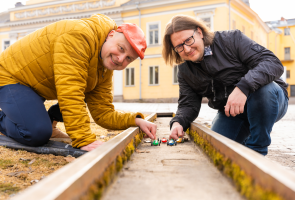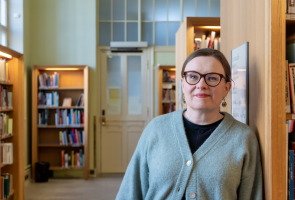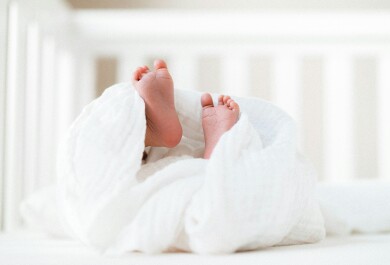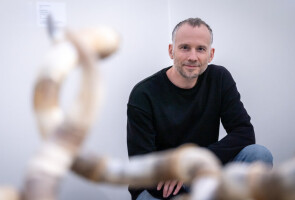The Baltic Sea is in many ways a unique research subject – at the same time, it is a young sea, but also one of the busiest and most polluted seas in the world. It has been called a laboratory, a time machine, and a pilot, as the conservation methods that have been developed for the Baltic Sea are applicable around the world. At the University of Turku, biologists, geographers, historians and researchers in natural sciences and maritime spatial planning are focusing on the current challenges. Six researchers reveal how their research aims to improve the state of the Baltic Sea.
Nearly 400,000 square kilometres of surface area and nine coastal countries. Organisms that get along both in saltwater and freshwater environments.
The Baltic Sea is a research subject that expands across different scientific disciplines and state borders. If you had to describe the sea with one word, it would be change.
“The Baltic Sea has been called a time machine. It is shallow and small, and many people live in the surrounding countries. Many environmental problems are first observed in the Baltic Sea. But, for the same reasons, once we take action to improve its state, we can also see the positive development first in the sea,” explains Associate Professor Jari Hänninen from the Biodiversity Unit of the University of Turku.
For the last few years, Professor of Geography Jukka Käyhkö has been involved in international projects that study the impact of the climate change on the Baltic Sea. He is one of the main authors of the Climate Change in the Baltic Sea 2021 Fact Sheet of the Baltic Marine Environment Protection Commission (HELCOM), which is a report addressed to decision-makers.
According to the estimates presented in the report, the temperature and sea level will continue to rise and the winter-time ice extent will decrease. These changes have various impact on the ecosystems and individual species in the Baltic Sea as well as on shipping and other human activities in the region.
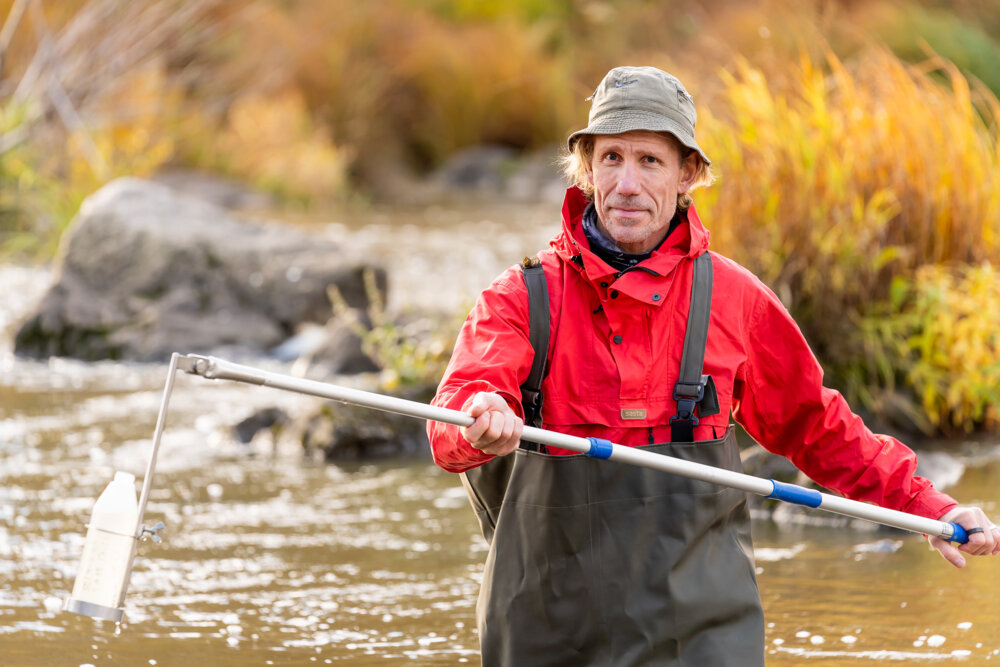
Jukka Käyhkö’s research focuses on climate change and its impact and control. For HELCOM’s Fact Sheet, he compiled a section on the effects of the climate change on the runoff of the rivers draining into the Baltic Sea.
Furthermore, climate change will increase rainfall, especially in the northern parts of the catchment area. The more it rains, the more nutrients are washed to the sea from the agricultural land. Eutrophication is one of the greatest environmental challenges in the Baltic Sea. As the surface flows and river drainage increase, nutrients from cultivated lands will end up in the sea in increasing amounts.
“Winters are problematic. If the precipitation falls as rain instead of snow while the rate of evaporation is minimal due to low temperatures, plus there is no vegetation on the crop fields to consume the water, the excess surface runoff flows in the sea carrying sediments and nutrients with it,” says Käyhkö.
Eutrophication leads to the deterioration of the marine environment also from the perspective of recreational use and food production. In the Archipelago Sea catchment area, eutrophication is controlled by adding gypsum on the fields, as it retains phosphorus in the soil.
”We try to connect different natural processes and human activities so that our overall understanding increases.”
– Jukka Käyhkö
Käyhkö describes geography as multitasking where several matters are at hand at the same time. Geography is also a bridge-builder between different disciplines. The research is guided by an idea of a regional system: many stress factors and challenges put a strain on the Baltic Sea and geographers attempt to synthesize these to form a holistic, systemic picture.
“Let’s consider the catchment area of the Baltic Sea, which – in addition to the sea basin itself – consists of the surrounding land area from which the water flows into the Baltic Sea. We attempt to connect different natural processes and human activities, most often with the aid of geospatial data analyses, so that our overall understanding increases.”
According to Käyhkö, the Baltic Sea can function as a pilot for solving global challenges: conservation methods can be developed with extensive data and high-standard research, and they could be applied in various parts of the world in similar sea areas. The research results can both prevent problems before they occur or repair existing damage. One major issue is the high phosphorus content on the seafloor which causes internal nutrient load in the sea.
“We have seen a great deal of improvement and, for example, nutrient emissions to the Baltic Sea have decreased. However, nature recovers regrettably slowly when measured on a human time scale,” Käyhkö notes.
Follow-up Data Helps in Perceiving the Bigger Picture
The University’s trump card in the Baltic Sea research is long-term time series.
According to Associate Professor Jari Hänninen, no other research institute or university in the Baltic Sea region has such long-term time series on the marine environment as the University of Turku.
“We have the longest time series in Europe, over 50 years of data. As we have this gold mine, we are in a good position to conduct different kinds of studies,” says Hänninen.
”All environmental problems are first observed in the Baltic Sea. But, for the same reasons, once we take action to improve its state, we can also see the changes first in the sea.”
– Jari Hänninen
Hänninen is interested in the long-term, slow changes that occur in the sea. Year-round follow-up enables observing these changes. For example, the time series include zooplankton samples that have tracked the composition of the plankton in the Baltic Sea. The studies have since been extended to other species, such as Baltic herring that eats zooplankton.
“In a way, we are covering the entire food web.”
The increasing precipitation leads to decreasing salinity. As the salinity of the Baltic Sea has dropped over the years, fresh water species have moved in. Usually, the fresh water species are small water fleas or rotifers that are poor nutrition to the Baltic herring. Changes in the biotic community has led to weight loss and weaker reproduction in the herring populations.
The zooplankton species in the Baltic Sea originate from the Atlantic Ocean or lakes. The sea area known as the Baltic Sea was formed approximately 5,000 years ago and it is therefore a rather young sea. Its biodiversity is still developing.
“In evolutionary terms, 5,000 years is a short time and therefore there are not many endemic species in the Baltic Sea,” says Hänninen.
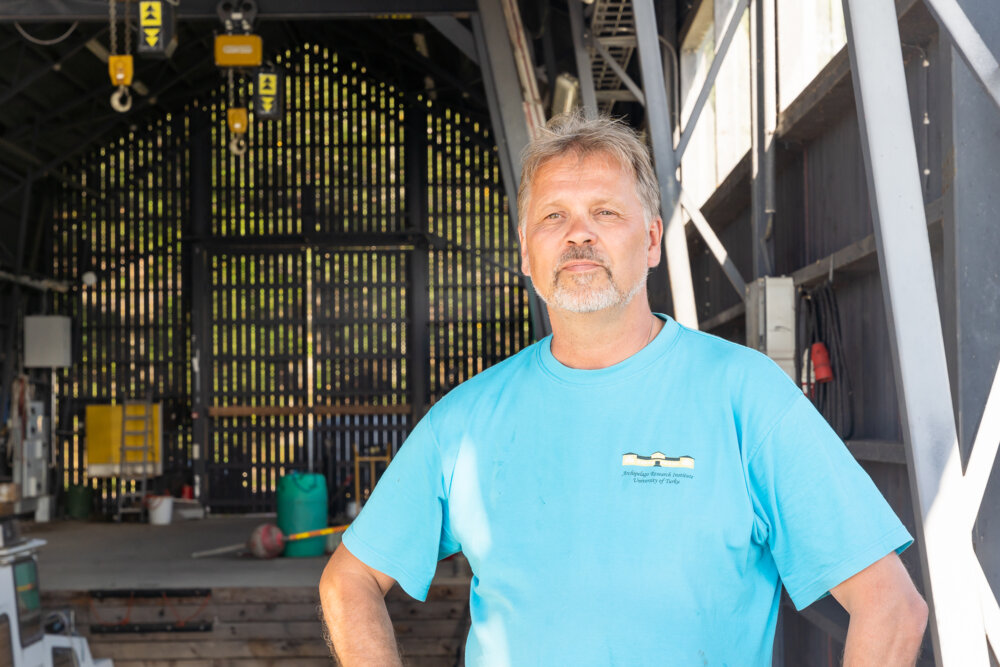
The eutrophication of the Baltic Sea has happened in a few decades. “We have to understand how the sea works so that we can improve its state,” says Jari Hänninen.
Samples measuring different kinds of physical and chemical properties of the seawater have been collected at the University’s research station on the Seili island in Turku Archipelago from 1966 onwards.
Due to the University’s Financial Balancing Programme, the use Seili island and the operations of the research station are currently reviewed, and different collaboration and external funding opportunities are under discussion. Decisions regarding the research station will be made by the end of 2024.
Biotic Community Reflects the State of the Sea
Professor of Ecology Veijo Jormalainen studies the Baltic Sea’s littoral zone in the coastal area. Jormalainen focuses particularly on the relationship between algae and crustaceans and gastropods.
In an already concluded Baltic Sea research programme, Jormalainen studied the impact of climate change on Fucus vesiculosus and Fucus radicans brown algae, and on Idotea balthica marine isopod that feeds on these algae. In the light of current knowledge, it seems that the most northern and eastern populations of brown algae and isopods will not tolerate the conditions that are predicted for the 22nd century.
“We have been able to reverse worrying trends for the better very efficiently and it is mostly thanks to the international collaboration.”
– Veijo Jormalainen
Jormalainen is currently studying how invasive species influence their new environment and whether endemic species adapt to them. Empirical research is conducted on Rhithropanopeus harrisii, a white-fingered mud crab, which spread to the Finnish coast from the Naantali harbour near Turku in 2009.
“The Baltic Sea is a hotspot for invasive species, as we have around 135 of them, and many of the species have lived in the sea for a long time. For example, barnacles appeared in the Baltic Sea for the first time in the 19th century and now many people consider them to be a permanent resident of the marine community.”
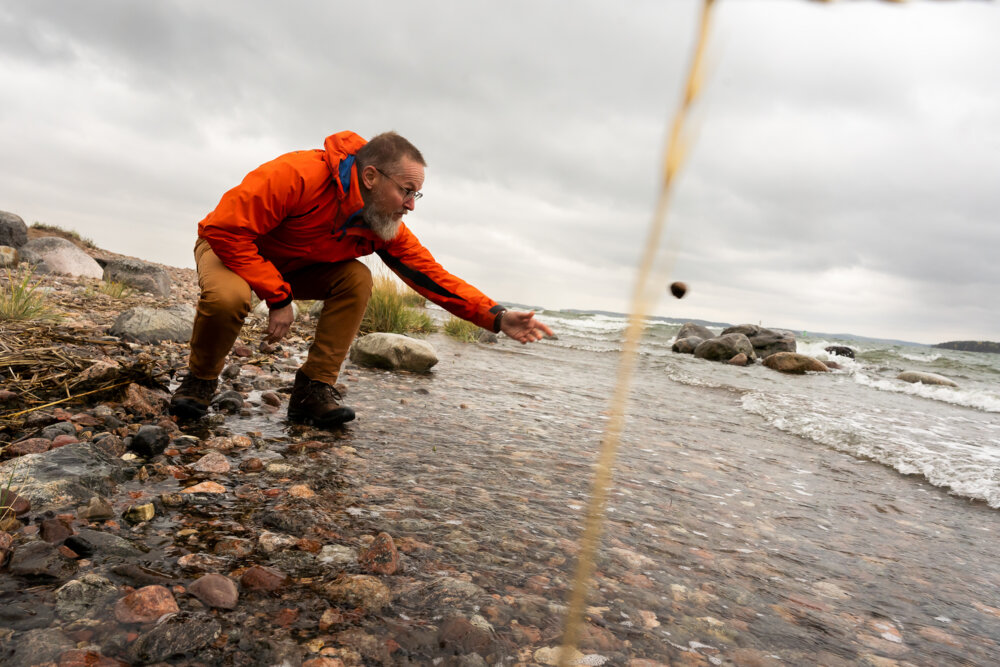
Veijo Jormalainen says that the impact of many invasive species on the ecosystem is still poorly known. The follow-up data builds our understanding of what is happening in the marine environment.
Jormalainen’s study also focuses on environmental toxins, such as heavy metals, surface finishings, and chemicals used in firefighting. For example, the researchers have found substantial amounts of mercury in white-tailed eagles and cormorants. In addition, a new substance discovered in the food web of the Baltic Sea is an organic perfluorinated compound used in aeroplanes’ hydraulic fluids.
Jormalainen notes that also extreme weather phenomena, such as heat waves, have an impact on the marine environment. At the Åland Islands, the highest surface water temperature in the history of the local research station was measured in summer 2022. As for the measuring point at the Hanko Peninsula, the southernmost tip of the Finnish mainland, the highest temperature at the bottom of the sea during the station’s one hundred years of history was measured in 2018.
Accumulation of Microplastics Predicted with Modelling
One of the most discussed environmental problems in the last few years has been microplastics. The latest research project of Senior Researcher in Geology, Docent Saija Saarni is related to the sedimentary processes of microplastic litter: how much plastic ends up in the sea on an annual level, and where the litter is deposited and why.
“As a geologist, I’m interested in change and I like to connect different matters to time. In my study, I measure how many microplastic particles are deposited on a square metre in a day or in a year. I believe that we will need this kind of data a great deal in the future.”
Microplastic ends up in the environment, for example, from car tyres, raw materials for plastic products, and synthetic fibres. Microplastics are monitored with sediment traps that collect all the materials that are deposited on the seafloor.
”When we know what to expect, it is easier to efficiently direct and allocate measures to the correct targets.”
– Saija Saarni
It is expected that the climatic conditions will change especially in the winter months. The follow-up has already shown that the flux rate of sediment and nutrients multiplies in a snowless winter.
The problem posed by microplastic litter is related to its concentration, meaning how much microplastics are deposited in an area and how quickly it accumulates.
“If a single plankton organism swallows a microplastic particle, it is not a big deal on the population level. However, if there is a high concentration of microplastics and most of the plankton feed on it, it starts to affect the plankton’s reproduction, which in turn has a significant impact on the entire ecosystem,” Saarni explains.
The research results can be used in predicting the future.
“Only through modelling can we predict how the concentrations will change in the future with different kinds of scenarios for plastic use and production. When we know what to expect, it is easier to efficiently direct and allocate measures to the correct targets.”
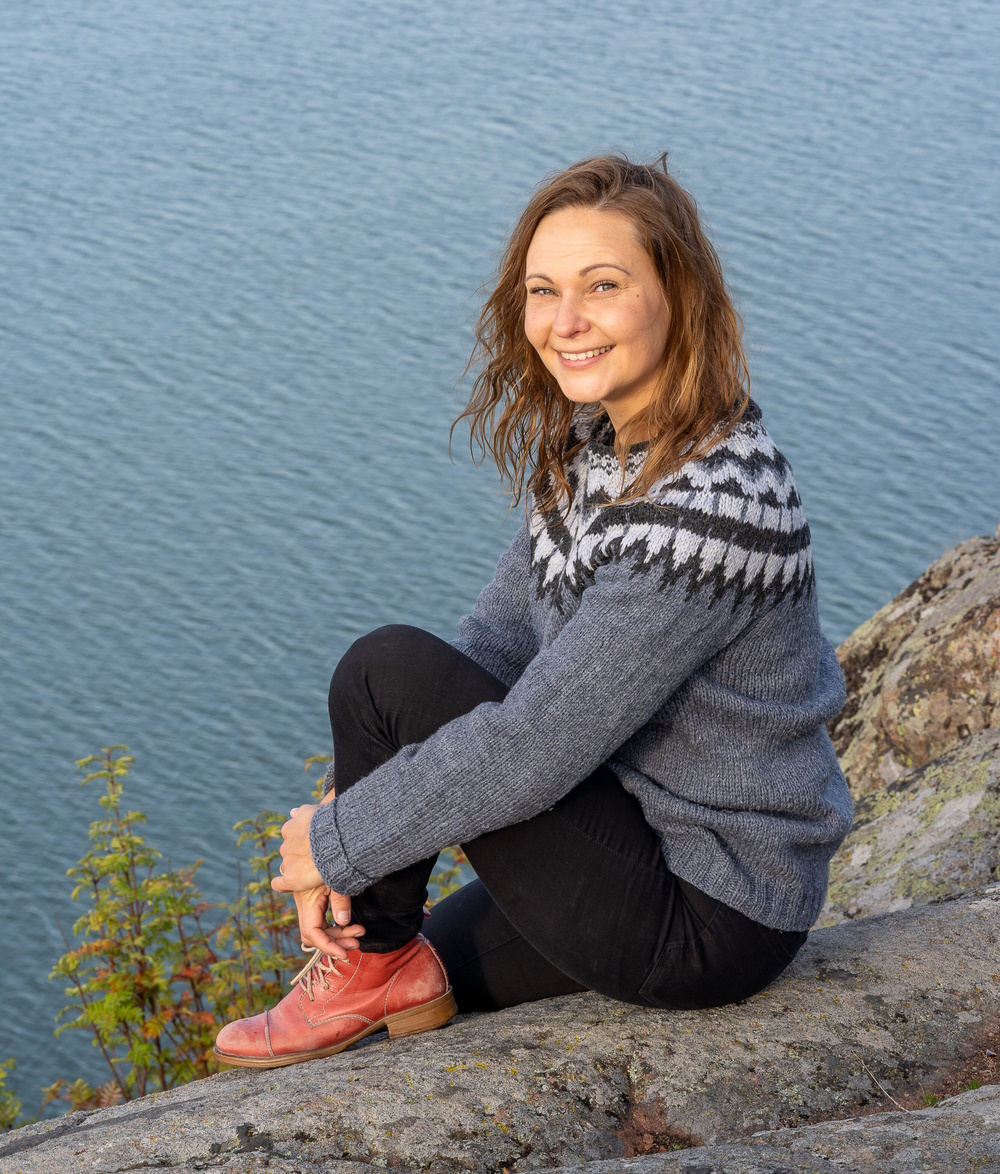
Saija Saarni says that, although microplastics were first discovered in the 1970s, the concept became more widely known only in 2004. After that, our understanding and research on the topic have increased exponentially.
At the moment, the researchers are studying how microplastics are deposited in the sea. They measure particle size, shape and quality. For example, the concentration of microplastics has an impact on how quickly and by which mechanisms the plastic ends up in the sediment.
The microplastics that have already ended up in the sea cannot be removed, but according to Saarni, the concentration is not yet so high that it would have a significant impact on the living organisms.
“It is not yet too late, but now is the time to act and take charge of the effluents ending up in the Baltic Sea. Fortunately, we are already making progress,” says Saarni.
Maritime Spatial Planning Bridges Different Interests
Sea and maritime studies is one of the six strategic research and education profiles of the University of Turku which conduct research and offer education across disciplines. Senior Advisor Anne Erkkilä-Välimäki studies the development of maritime spatial planning.
The goal is to reconcile different kinds of needs and interests related to the sea in accordance with the EU’s maritime policy. Research can develop planning policies and produce information to support decision-making. In addition to the environment, social and economic sustainability is taken into account.
“The idea is to create sustainable maritime activities so that the state of the environment will not deteriorate, but improve,” Erkkilä-Välimäki describes.

According to Anne Erkkilä-Välimäki, interests in the use of the Baltic Sea region increase constantly. The impact of climate change has to be taken into consideration also in maritime spatial planning.
Maritime spatial planning is an official process and its first round was conducted in the EU area in 2014–2021. The second round is already underway in many countries. In the plan that is drafted in map form, different areas are appointed to different activities, but at the same time, multipurpose uses are designed for the same areas.
At the moment, maritime energy production is part of the planning. On the one hand, there is an ambition to increase the amount of offshore wind power, but on the other, both shipping and fishing require space.
“Different perspectives collide in maritime spatial planning. I study how these perspectives are taken into consideration and how the different stakeholders are engaged,” says Erkkilä-Välimäki.
She gives coastal fishing as an example as it has a significant role in the identities of local communities. Offshore wind power does not have a similar social significance. Both have an impact on the economy and the environment so the challenge is to take them equally into consideration in the planning.
”The idea is to create sustainable maritime operations so that the state of the environment will not deteriorate, but improve.”
– Anne Erkkilä-Välimäki
In Finland, the maritime spatial planning policy is a strategic document – it guides the planning, but does not enforce regulations. Erkkilä-Välimäki believes that its significance will be strengthened as, for example, interests in maritime energy and food production have to be reconciled more efficiently in the future.
She notes that the goal is to produce scientific information for decision-making. Also, value judgements related to the use of marine areas must be considered in producing new knowledge. Multidisciplinary collaboration is in a key position.
“Multipurpose use of the marine environment in itself is the direction we are headed in the future. The University’s different faculties and perspectives can provide a great deal for building bridges between these different interests.”
Historical Studies Reveal Changes in Attitudes
The Baltic Sea is also studied in the Faculty of Humanities. University Lecturer and Historian Otto Latva is interested in the relationship between people and environment, and he has framed his context to the Baltic Sea.
“Our conceptions on marine animals can change very strongly over time and within our culture. It is the starting point for my research.”
At the moment, Latva leads the multidisciplinary HumBio research project that investigates the human relationship with the changing biodiversity of the Baltic Sea from the point of view of human sciences. In the HumBio project, the researchers study, for example, people’s perceptions on native and invasive marine plants and animals in Finland.
Latva also leads a project called Memories of Porpoises that explores the shared past of humans and the Baltic Sea porpoises that are nowadays extremely endangered.
“One point that I want to make with my research is that there are no timeless perceptions about nature.”
– Otto Latva
According to Latva, studying the environment through cultural research is important so that we are able to understand environmental disasters and stop them from happening. He points out that many environmental problems, such as the biodiversity crisis and climate change, can be traced to actions of the human cultures.
“People are intrinsically related to environmental problems. This is one reason why we need the perspective of human sciences – so that we can understand how the problems have been created in the long run, how they exist in our culture, and how they have formed.”
By collecting memories and thoughts, it is possible to see the changes that have occurred in people’s perceptions about the environment. According to Latva, it is easiest to gather data between mid-19th century and present-day. The historical studies are based on interviews and newspaper databases.
Human sciences create more context for natural sciences.
“One point that I want to make with my research is that there are no timeless perceptions about nature. For example, people’s relationship to cormorants has changed a great deal. At the beginning of the 20th century, the birds were still admired, but today they are a mostly hated species.”
In addition, the goal is to gather the views of experts in different fields as well as those of the people who live in the coastal regions. The information can then be related to the decision-makers.
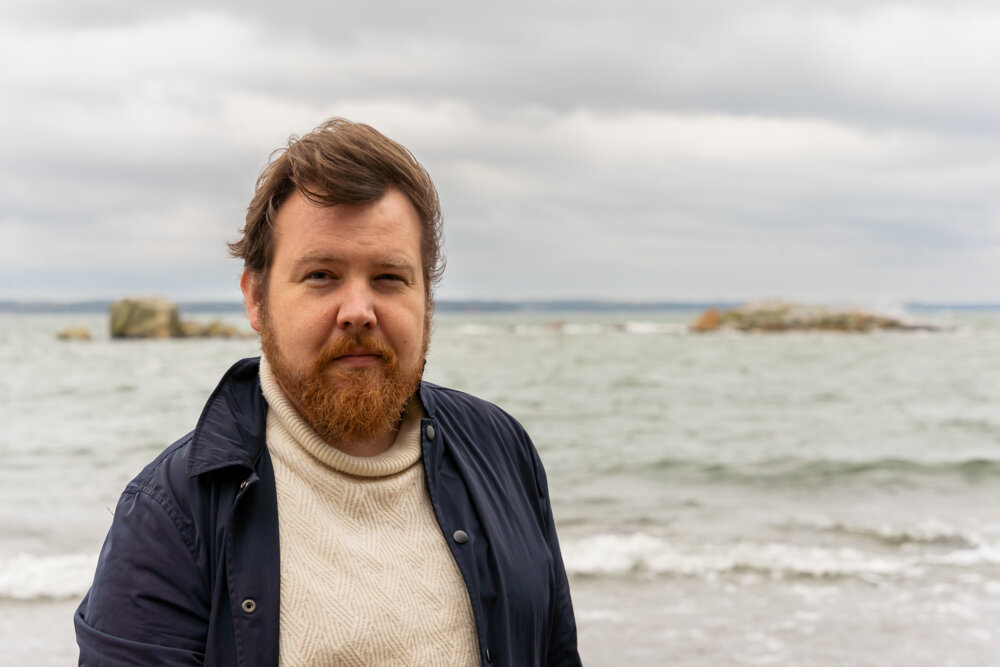
Otto Latva wrote his dissertation on the relationship between humans and squid. It sparked his interested towards marine studies.
Latva says that studying the relationship between people and the changing biodiversity is a rather new topic in humanities. There is a great deal of expertise on the topic at the University of Turku, both on a national and international scale. Researchers in human sciences focusing on the marine environment also collaborate extensively with Åbo Akademi University.
In Latva’s opinion, it is surprising how little history and biology have been mixed so far in research.
“Although the disciplines are different in their traditions, they support each other a great deal in the end.”
Focus on Multidisciplinary Collaboration
All six interviewees concur that international collaboration is necessary for the protection of the Baltic Sea. One key actor is HELCOM, under which the University’s researchers have conducted many projects.
Many positive changes have been gained through international regulation and EU legislation. According to Veijo Jormalainen, the Atlantic salmon nearly disappeared from the Baltic Sea, but now its situation has improved significantly. Also, the populations of seals, cormorants, and white-tailed eagle have been recovering after conservation decisions were made in the 90s.
“The Baltic Sea can provide an example both in good and bad. It has been dubbed as the most polluted sea in the world, and so it has been in the past. Unfortunately, when it comes to some nutrient concentrations, it still is. However, we have been able to reverse worrying trends for the better very efficiently and it is mostly thanks to international collaboration,” says Jormalainen.
Jari Hänninen believes that it is important to stay positive. Being aware of the past successes helps in this. For example, in the 1970s and 80s, sulphur ended up in the sea through factories’ flue gasses, which led to the acidification of the water. When regulations on exhaust emissions were enacted, the problem was solved.
“We have great examples of successful outcomes – when there’s a will, there’s a way. Currently, people are wondering whether we can ever fix eutrophication. Why couldn’t we?”
Text: Sara Harju
Photos: Hanna Oksanen
Translation: Mari Ratia
The article has been published in the Aurora magazine’s issue 1/2023.
